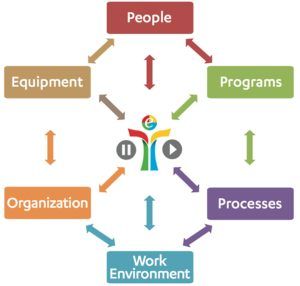HOP involves the integration of error reduction, elimination, and mitigation strategies into an organization and requires the use of very specific definitions for things like errors, events, deviations, violations, traps, triggers, and tools. Leaders who commit to using specific, science-based and practical definitions see faster and more effective integration of HOP concepts into the day-to-day work. This integration results in more sustainable performance! In addition, understanding our personality tendencies (and those of others), along with the definitions helps people in the organization more consistently apply the definitions, providing a platform for sustainability.

How Definitions Impact Human and Organizational Performance
Rob Fisher

If leaders don’t know and live the definitions, are they really helping the workforce be safer? If a leader doesn’t know the difference between an error, a deviation or a violation, they will consistently misuse the terms and the definitions. This results in far too many incidents being misdiagnosed as someone just violating a rule, and therefore putting in corrective actions that won’t really fix the system that drove an error, or failed to mitigate the consequences of an error.
Each person on each task at any given time are surrounded by other people, programs, processes, work environment, organization (local to the task) and equipment. Changes in these Systemic Drivers in the Task-Based System drive people to react to the changes, increasing performance hazards and therefore errors and incidents. People do what they do, at the time that they do it, for reasons that make sense to them at the time. You can look to the systemic drivers to discover what the reasoning was for what they did, and why it made sense to them at the time. You can also use the Task-Based System as a predictor of increased risk.
The definitions used in an organization should be derived, enhanced and developed with the objective of the practical application, without compromising the science-based underpinnings of human and organizational performance.
Through proper education and integration of these HOP concepts, organizations and individuals can create more self & team awareness of the elements of the task-based system. This leads to a better understanding and management of how people will tend to react to changes in the system within their personality tendencies, regardless of their role in the organization. This usually requires a redirection of the language and behaviors of the leaders in the organization.
Understanding how each individual in a leadership role reacts to circumstances and events can lead to the organization helping these leaders to intentionally respond better to incidents and near-misses, thereby ensuring more understanding of causes and contributing factors, resulting in more effective corrective actions. When there is less blaming of individuals and more understanding of the systemic drivers of errors, incidents, and near-misses, individuals in the organization become more engaged. This engagement typically results in significantly improved trust and overall safety culture. It can also result in the discovery of systemic drivers so they can be managed or mitigated before they cause an error or incident.
Want another insight? CLICK HERE!
